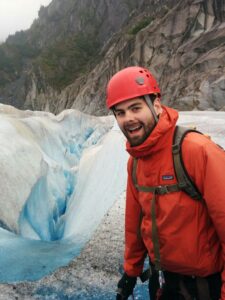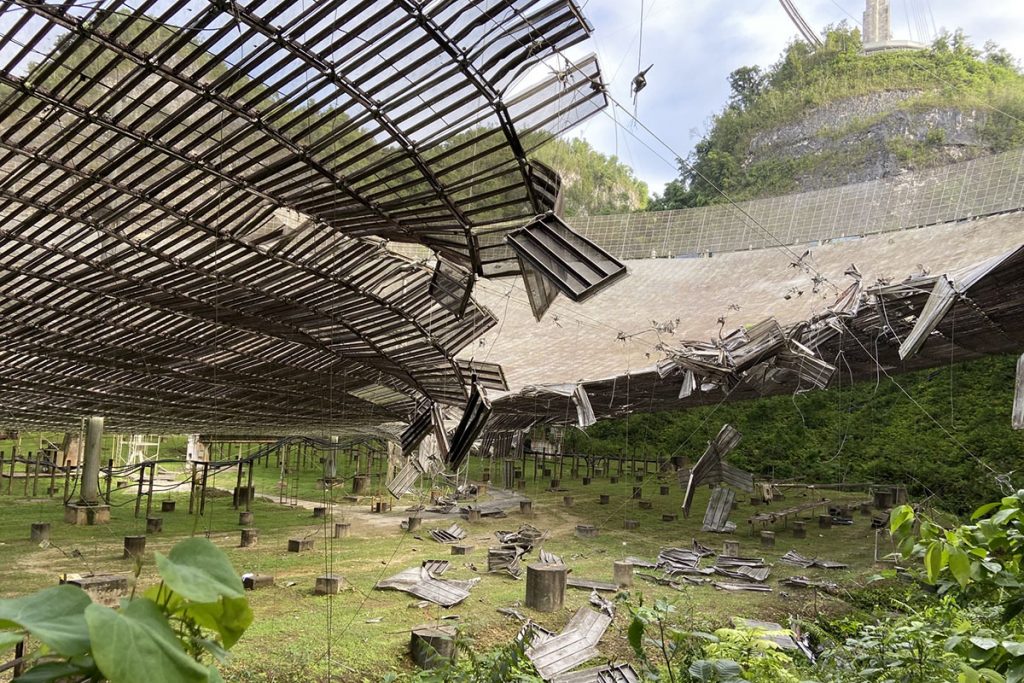Media
Transcript

After the news today, we will be joined by Georgia Tech postdoc Dr. Kynan Hughson to go more in-depth about this week’s amazing wealth of publications on the dwarf planet Ceres, which has been found to have a subsurface, briny ocean and possibly active cryovolcanoes. I am a huge fan of cryovolcanoes, so I’m very excited to speak with Dr. Hughson.
Before we get to the news, though, I want to give you all a heartfelt thank you for being kind, supportive, and welcoming last week as a new host. I feel less terrified this week as a result. We have a truly wonderful community, and I’m proud to be a part of it.
And now the news.
Since this week’s planetary news has been dominated by Ceres, we decided to share some recent mission updates that are related to planetary science. This being 2020, not all of those updates are good news. Let’s get the bad news out of the way first.
On Monday, a three-inch auxiliary cable at Arecibo Observatory snapped, whipping through the dish panels and causing a 100-foot gash. While this sounds incredibly awful, and the photo is striking, the cable damaged only 250 panels, a mere 1% of the total dish. However, and there always seems to be a “however” this year, the Gregorian dome above the dish also suffered some damage, as did the dome’s access platform. While the dish can be used at a decreased sensitivity with holes in the surface of the primary reflector, the damage to the dome has to be repaired first. Operations have been suspended as a result.

The observatory’s director, Francisco Cordova, stated: We have a team of experts assessing the situation. Our focus is assuring the safety of our staff, protecting the facilities and equipment, and restoring the facility to full operations as soon as possible, so it can continue to assist scientists around the world.
Arecibo, which is operated by the University of Central Florida, has been in operation for fifty years and has managed to survive countless hurricanes and earthquakes. The facility was still under repair from Hurricane Maria in 2017. In spite of the ongoing repairs, Arecibo was giving us great science, and as recently as Monday, we reported on the discovery of a new near-Earth asteroid imaged by the observatory. We are continuing to monitor social media for more information and updates. At the time of writing, the estimates we have seen have ranged from a minimum of two weeks to several months to a year.
This is a hard blow to radar and radio astronomy.
And now, for the good news.
On Tuesday, NASA’s OSIRIS-Rex spacecraft performed a final dress rehearsal in preparation for sampling our favorite asteroid to hate, Bennu.

To collect a sample from the surface of Bennu, OSIRIS-Rex must perform four maneuvers, and the dress rehearsal covered the first three. First, the spacecraft performed a deorbit burn to get out of its safe, home orbit and reach the asteroid. Four hours later was the Checkpoint burn, where the spacecraft checks its position and velocity and then adjusts its downward trajectory to approach the surface. Eight minutes after the Checkpoint burn was the Matchpoint burn, which is when OSIRIS-Rex has to match its rotation to Bennu’s in order to fly in tandem with the asteroid above the Nightingale sample site.
All three of these burns went well, and the spacecraft performed a back-away burn to end the rehearsal and return to its safe orbit. Keep in mind that all the commands must be sent in advance due to the 16 light-minutes distance from Earth, and OSIRIS-Rex functions autonomously once the “go” command is given. Also per the press release: During the rehearsal, the spacecraft successfully deployed its sampling arm, the Touch-And-Go Sample Acquisition Mechanism (TAGSAM), from its folded, parked position out to the sample collection configuration. Additionally, some of the spacecraft’s instruments collected science and navigation images and made spectrometry observations of the sample site, as will occur during the sample collection event.
You can see the newly acquired images of the Nightingale site on our website at dailyspace.org. And we will be waiting along with all of you for the actual sampling in October.
Last but not least, we received news that NASA’s TESS mission completed its primary mission on July 4th. TESS, the Transiting Exoplanet Survey Satellite, has surveyed almost 75% of the sky during this first two years of operation. The satellite, for those unfamiliar, uses changes in the brightness of stars to detect the transit of planets across the surface of those stars. So far, scientists have found 66 confirmed exoplanets and over 2,100 candidate exoplanets in the data.

TESS has now entered into the extended portion of its mission, turning to finish surveying the southern sky through September 2022. Several improvements have been made as to how the satellite collects and processes data. Per the press release, “Its cameras now capture a full image every 10 minutes, three times faster than during the primary mission. A new fast mode allows the brightness of thousands of stars to be measured every 20 seconds, along with the previous method of collecting these observations from tens of thousands of stars every two minutes. The faster measurements will allow TESS to better resolve brightness changes caused by stellar oscillations and to capture explosive flares from active stars in greater detail.”
Congratulations, TESS. We will continue to expect great results, and we’ll bring them to you here on the Daily Space.
Learn More
Broken Cable Damages Arecibo Observatory
A Successful Second Rehearsal Puts NASA’s OSIRIS-REx on a Path to Sample Collection
NASA’s Planet Hunter Completes Its Primary Mission
Credits
Written by Beth Johnson
Hosted by Beth Johnson
Audio and Video Editing by Ally Pelphrey
Content Editing by Beth Johnson
Executive Producer Pamela Gay
Intro and Outro music by Kevin MacLeod, https://incompetech.com/music/


 We record most shows live, on Twitch. Follow us today to get alerts when we go live.
We record most shows live, on Twitch. Follow us today to get alerts when we go live.